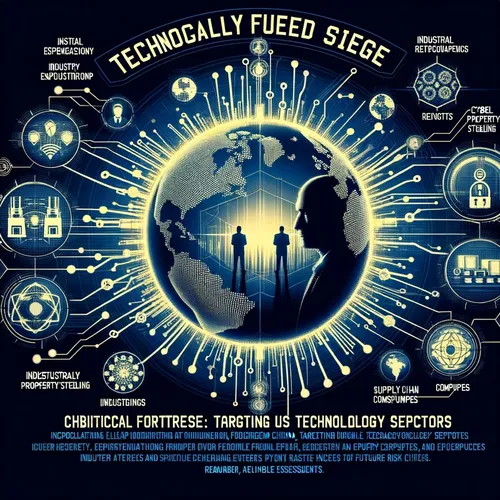Chinese Hackers Nabbed, Zero-Days Zapped, and EVs Gone Rogue: The Cyber Sizzle Is Real!
- Author
- Quiet. Please
- Published
- Sun 13 Jul 2025
- Episode Link
- https://www.spreaker.com/episode/chinese-hackers-nabbed-zero-days-zapped-and-evs-gone-rogue-the-cyber-sizzle-is-real--66966928
This is your Silicon Siege: China's Tech Offensive podcast.
Hey listeners, it’s Ting—your friendly cyber-sleuth, digital detective, and lover of all things hacking and China. Buckle up, because the last two weeks have seen the digital battleground heat up like never before. Let’s dive right into Silicon Siege: China’s Tech Offensive.
First, the shocker: just this weekend, Italian authorities nabbed Zewei Xu, a 33-year-old Chinese national and alleged hacker with the infamous Silk Typhoon (also known as Hafnium) crew at Milan’s airport. Xu, wanted by the FBI, is accused of orchestrating cyber-espionage ops from COVID-19 vaccine research theft to hacking thousands of Western government emails. U.S. officials say his group exfiltrated sensitive data on U.S. policies and intellectual property. This arrest isn’t just big news—it’s a signal. Even the globe-trotting APTs aren’t safe when law enforcement gets serious.
But that’s just the headliner. Behind the scenes, China’s cyber campaigns are getting even sneakier. Take CitrixBleed 2, a critical zero-day in Citrix NetScaler Gateway added to CISA's exploit catalog after U.S. companies started seeing their VPNs go haywire. Security teams across Silicon Valley and Wall Street are humming with patch activity, but the bug’s been actively exploited, likely including by Chinese state actors. This is industrial espionage with turbochargers—sniffing out credentials, business secrets, even blueprints with a single exploit.
And it’s not just software. Chinese-made EVs, according to Dr. Harel Menashri, have become rolling data vacuums. With cameras, mics, and connectivity by design, these cars are now viewed by U.S. and Israeli defense agencies as potential espionage tools. Imagine your dashboard logging not just your tunes, but possibly your after-work calls—straight onto a server in Shenzhen. That’s why nations are scrambling to block these vehicles from sensitive infrastructure.
Semiconductor supply chains are another hot zone. ASML, the Dutch EUV chipmaking champ, remains a juicy target for IP theft. China’s persistent attempts to both buy and steal this technology underline the playbook: if you can’t build it, borrow it, or just take it. Experts warn that as China tightens its grip on manufacturing, the risk isn’t just lost patents—it’s lost technological edge for the U.S.
Let’s not forget the ongoing saga with port cranes. Around 80% of U.S. ship-to-shore cranes are from China’s ZPMC. Security hawks like William Henagan from CFR flagged these giant machines as possible Trojan horses, with embedded modems and software that could compromise port logistics or, in a worst-case scenario, military operations. The Biden administration’s 25% tariff and the looming threat of a near-total import ban signal a shift from price wars to cyber-wars at the harbor.
Industry experts all agree: the trend isn’t just espionage, but “pre-positioning”—planting backdoors today for potential sabotage tomorrow. That means critical infrastructure is now considered a battlefield, not just a business target. The push for digital sovereignty and domestic resilience is only going to accelerate from here.
The strategic implication? If you’re in tech—software, semis, or supply chain—the new normal is relentless vigilance. The FBI is ramping up bounties for fugitive hackers while CISA races to patch the next gateway exploit. As Dr. Menashri puts it, “Disabling a camera isn’t enough—it’s the invisible channels you need to worry about.”
That’s a wrap for this episode of Silicon Siege! Thanks for tuning in, and don’t forget to subscribe. This has been a quiet please production, for more check out quiet please dot ai.
For more http://www.quietplease.ai
Get the best deals https://amzn.to/3ODvOta
